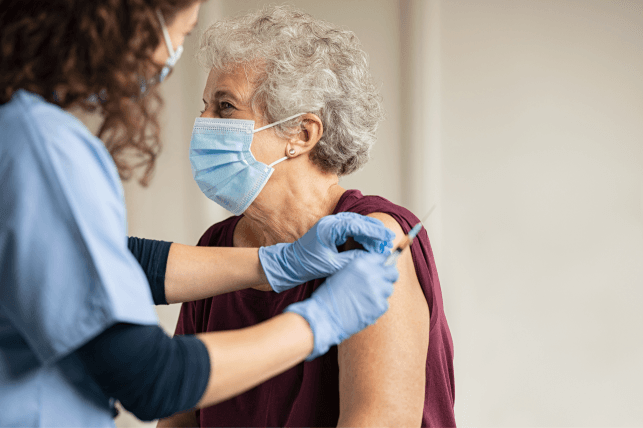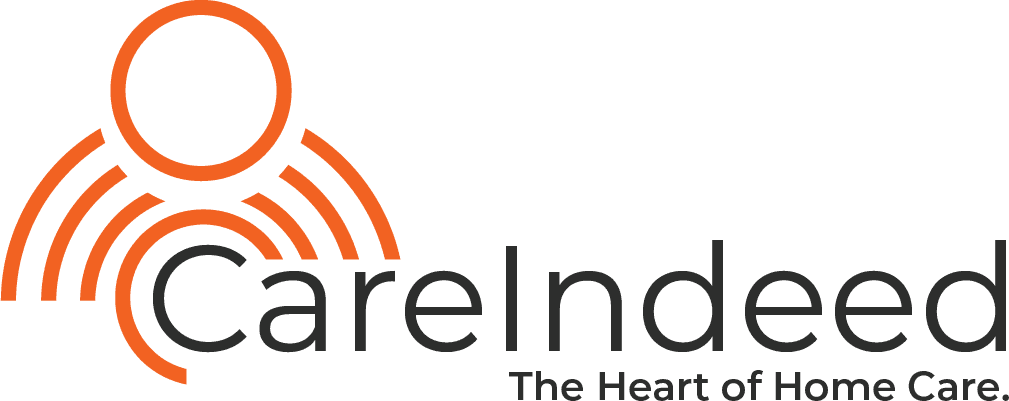
Stroke: Act FAST to Save A Life
Dee Bustos
Home Care Tips
Feb 08, 2021
8 min read
More than 795,000 people in the US suffer strokes each year, according to the CDC. Nearly one in every 20 US deaths is due to stroke.
Although strokes strike any age group, almost 75% of stroke victims are age 65 or older. Care Indeed offers post-stroke support for stroke survivors during their recovery. Strokes are the leading cause of disability in the US and affect women more than men. There are warning signs leading up to a stroke. Knowing the signs and what action to take can make the difference between a complete recovery or disability and even death.
What Is A Stroke?
A stroke is a serious emergency requiring medical intervention. During a stroke, the blood supply to the brain is cut off. This prevents oxygen and necessary nutrients from reaching the brain. Within minutes, brain cells start to die. Rapid medical intervention greatly improves chances for recovery.
There Are Three Types of Strokes:
1. Ischemic Stroke
When a blood clot blocks a vessel in the brain, it is called an Ischemic stroke. The majority of strokes are this type. A doctor can dissolve the blood clot and minimize damage to the body in most cases if treatment begins in less than 4 hours. Dissolving the clot usually restores the blood flow to the brain.
2. Transient Ischemic Attack, known as a TIA, or a Ministroke
A ministroke occurs when an artery is temporarily blocked. Usually, the artery blockage dissolves by itself and resolves in less than 24 hours. Ministrokes are warning signs that increase the risk of stroke.
3. Hemorrhagic Stroke
This type of stroke occurs when a blood vessel in the brain ruptures. Almost 40% of all stroke deaths are hemorrhagic strokes. The time until treatment is received is critical. The doctor must stop bleeding and watch for brain swelling. Surgery may be necessary if the ruptured blood vessel continues to bleed.
Recognize the Warning Signs of a Stroke
Stroke symptoms frequently appear without warning. It is important to realize that there are general symptoms that a stroke is imminent or in progress. There are also symptoms unique to women.
Common Stroke Warning Signs:
- Difficulty understanding a conversation
- Trouble speaking
- Blurred vision or difficulty seeing
- Headaches
- Losing your balance or difficulty when walking
- One side of the mouth droops when you try to smile
- Weakness or loss of feeling in your arms or legs, usually on only one side
- Fatigue
Stroke Signs Specific to Women:
- All the above common stroke warning signs
- Fainting
- Shortness of Breath
- Hiccups
- Nausea
- Vomiting
- Seizures
- Disorientation and confusion
Remember: Act FAST for Strokes
The American Stroke Association reports that 2 million brain cells die every minute the stroke victim’s brain is deprived of blood. As the brain cells die, body functions like speaking or walking may be lost. If you think a loved one or someone around you is having a stroke, FAST is a mnemonic device that helps you remember the signs of a stroke and what to do.
Act FAST if it’s a stroke:
- F - When the person smiles, does a side of the face droop
- A - When the person raises both arms over the head, are the arms symmetrical, or does one arm hang or drop back down?
- S - Have the person repeat a sentence. Listen for slurred speech or difficulty speaking.
- T - Time is critical. Call 911 or emergency services immediately.
The emergency responders will ask when you first noticed the stroke symptoms. Every minute makes the difference between recovery or permanent damage and possibly even death. Don’t second-guess yourself.
If you see someone you suspect is having a stroke, let the medical professionals evaluate the symptoms. Obtaining medical care within the first hour of a stroke greatly reduces disability and death. Call 911 or emergency responders FAST when you think a family member, friend, or person is having a stroke.
Can Strokes Be Prevented?
Some factors increase the risk of having a stroke. Reducing or eliminating stroke risk factors and increasing overall health helps lower the chance of a stroke.
Eliminate These Stroke Risk Factors:
Smoking: If you smoke, eliminating tobacco use lowers the risk of a stroke. Avoid street drugs like cocaine and methamphetamines.
High Blood Pressure: Hypertension is a serious risk factor for strokes. Managing your blood pressure through healthy food, stress reduction, positive lifestyle choices, and medication is critical to lower the risk of having a stroke.
Excess Weight: Maintaining a healthy weight is recommended for many reasons. You can reduce the risk of diabetes, cardiovascular disease, and high blood pressure by keeping your weight at a healthy level. Exercise is one of the best ways to reduce the risk of a stroke.
Eliminate Saturated Fat: Eliminate excess sugars, cholesterol, and saturated fat in the diet. Strive for a healthy diet. Eating five or more servings daily of fruits and vegetables can lower the risk of stroke.
When Strokes Strike, FAST Saves Lives
If you or a loved one is at risk, knowing what to do and being prepared can save precious minutes. Have emergency medical information like any allergies, insurance details, and contact information easily accessible.
Record the time you first notice symptoms of a stroke so the medical team will have a reference timetable. Know the number of the local emergency responders or dial 911.
Cover the person you suspect is having a stroke with a blanket. Speak slowly and calmly, keeping the stroke victim in a comfortable position until emergency responders arrive.
Care Indeed offers Post-Stroke specialized care services. Caring for a stroke survivor can be challenging mentally, emotionally, and physically. If you need experienced post-stroke recovery care and support, contact us at (877) 504-3822.
COVID Vaccine Availability for Bay Area Seniors & Caregivers

3 Budgeting Tips for Seniors Living on a Fixed Income




